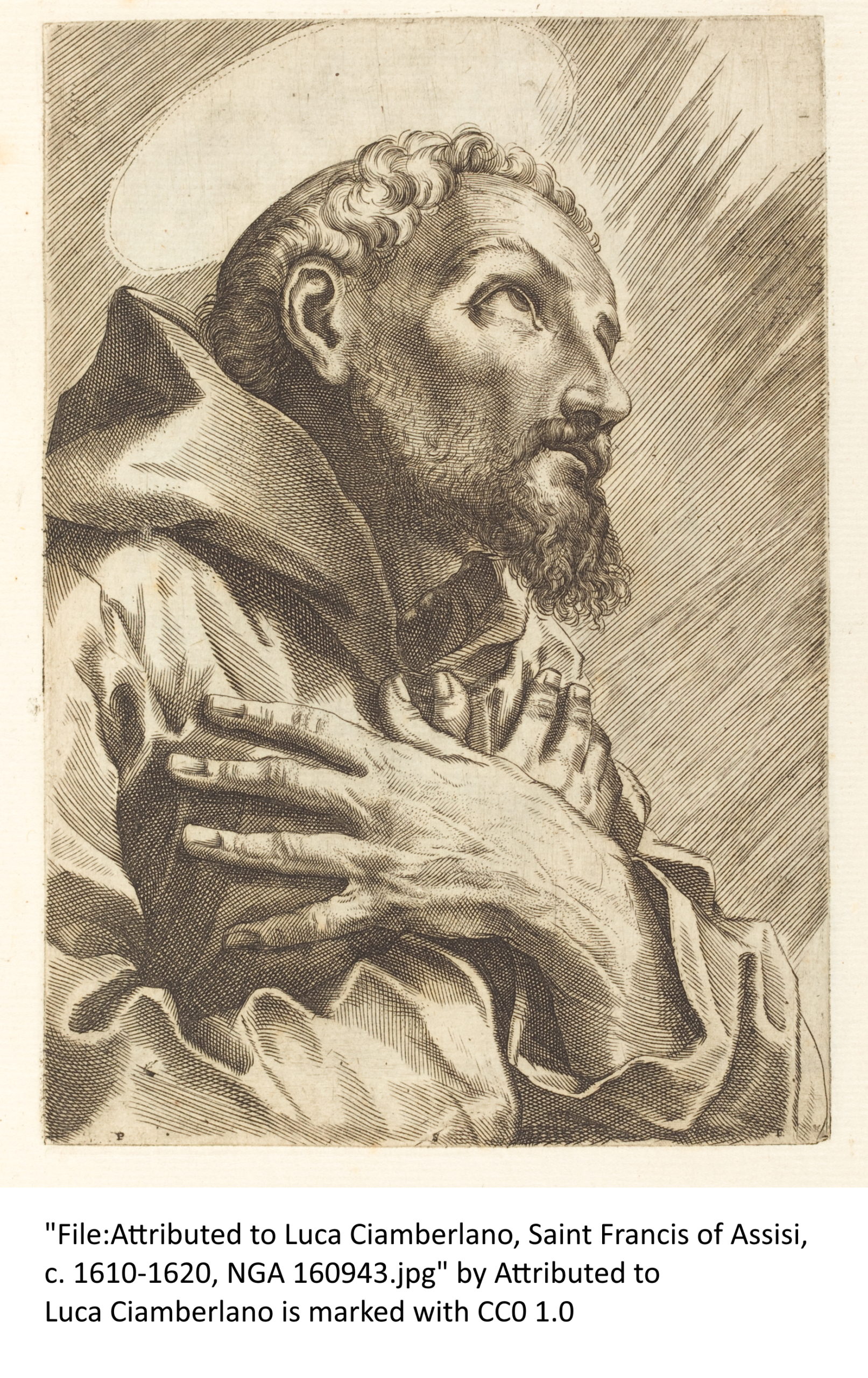(From Wikipedia: https://en.wikipedia.org/wiki/Francis_of_Assisi)
Francis of Assisi (born Giovanni di Pietro di Bernardone; Italian: Francesco d’Assisi; Latin: Franciscus Assisiensis; 1181 or 1182 – 3 October 1226), venerated as Saint Francis of Assisi, also known in his ministry as Francesco, was an Italian Catholic friar, deacon, mystic, and preacher. He founded the men’s Order of Friars Minor, the women’s Order of Saint Clare, the Third Order of Saint Francis and the Custody of the Holy Land. Francis is one of the most venerated religious figures in Christianity.
Francis set out to imitate Christ and literally carry out his work. This is important in understanding Francis’ character, his affinity for the Eucharist and respect for the priests who carried out the sacrament. He preached: “Your God is of your flesh, He lives in your nearest neighbor, in every man.”
He believed that nature itself was the mirror of God. He called all creatures his “brothers” and “sisters”, and even preached to the birds and supposedly persuaded a wolf in Gubbio to stop attacking some locals if they agreed to feed the wolf. In his Canticle of the Creatures (“Praises of Creatures” or “Canticle of the Sun”), he mentioned the “Brother Sun” and “Sister Moon”, the wind and water. His deep sense of brotherhood under God embraced others, and he declared that “he considered himself no friend of Christ if he did not cherish those for whom Christ died”.
In 1219, he went to Egypt in an attempt to convert the Sultan to put an end to the conflict of the Crusades. Francis’ visit to Egypt and attempted rapprochement with the Muslim world had far-reaching consequences, long past his own death, since after the fall of the Crusader Kingdom, it would be the Franciscans, of all Catholics, who would be allowed to stay on in the Holy Land and be recognized as “Custodians of the Holy Land” on behalf of the Catholic Church.
Francis is known for his love of the Eucharist. In 1223, Francis arranged for the first Christmas live nativity scene. According to Christian tradition, in 1224 he received the stigmata during the apparition of a Seraphic angel in a religious ecstasy, which would make him the first person in Christian tradition to bear the wounds of Christ’s Passion. He died during the evening hours of 3 October 1226, while listening to a reading he had requested of Psalm 142 (141).
Pope Gregory IX canonized Francis on 16 July 1228. Along with Saint Catherine of Siena, he was designated patron saint of Italy. He later became associated with patronage of animals and the natural environment, and it became customary for churches to hold ceremonies blessing animals on or near his feast day of 4 October.
info@vivafrancis.org | PO Box 518, Arroyo Grande, CA, 93421-0518
